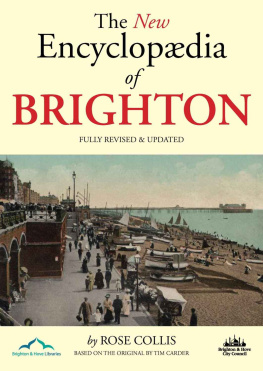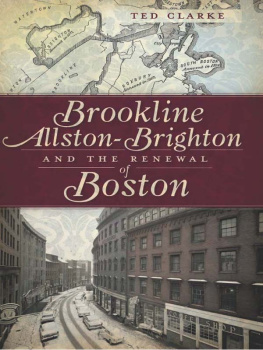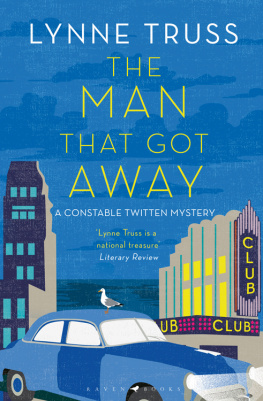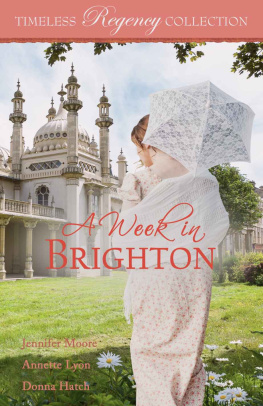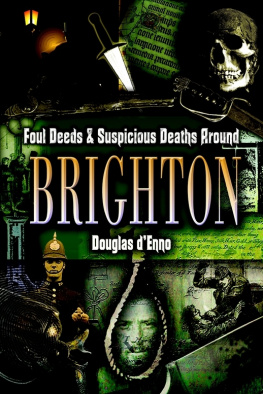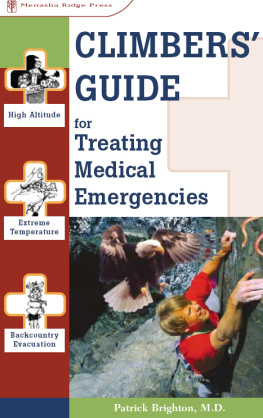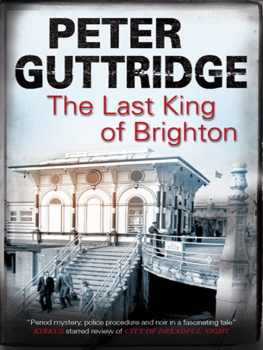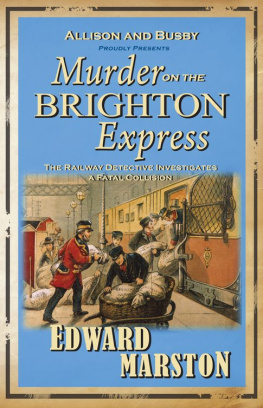The New
Encyclopdia
of
BRIGHTON
FULLY REVISED AND UPDATED by ROSE COLLIS
BASED ON THE ORIGINAL BY TIME CARDER
Published in England by
Brighton & Hove Libraries
Brighton & Hove City Council
Jubilee Library
Jubilee Street
Brighton
BN1 1GE
All rights reserved. No part of this publication may be reproduced, transmitted or used in any form by any means - graphic, electronic or mechanical, including photocopying, recording, taping or information storage and retrieval systems or otherwise - without the prior permission of the Publisher.
Brighton & Hove City Council
1st print edition 2010. This ebook edition 2012.
The views and opinions expressed in this book are the authors and do not necessarily reflect the views of the publishers or Brighton & Hove City Council. Every effort has been made by the author to ensure that all content is accurate at the time of going to press, and takes responsibility for errors and omissions herein.
Feedback or clarification for inclusion in future reprints is welcomed.
ISBN (print edition): 978-0-9564664-0-2
1990 edition text and diagrams Tim Carder
2010 edition text Rose Collis
All 2010 original photographs Rose Collis - jpeg copies are available for sale, see www.rosecollis.com for details
CONTENTS
INTRODUCTION
Twenty years ago, East Sussex County Council Libraries published The Encyclopaedia of Brighton , researched and written by Tim Carder. It soon became the most popular and well-used reference book on the towns history and architecture. In the two decades since then, Brighton has experienced more significant changes that possibly at any time since the London-Brighton railway opened in 1841. For instance, Brighton is now Brighton and Hove, a unitary authority and a city. In 1997, all three parliamentary seats went from Conservative to Labour. Our football club became a team without a permanent home; we lost one pier, while another was renamed and a new Churchill Square was created, as was another university. More than 100 years after it was first mooted, a new, purpose-built central library was opened, and the city now has Britains biggest free Pride event. Of course, some things didnt materialise in those two decades for example, several mooted major seafront developments have run aground for various reasons. Brighton and Hove did not become a European City of Culture; gave the thumbs-down to having an elected Mayor and, irrefutably and mercifully, has not become London-by-Sea.
In addition to updating and making corrections to the original text, I have created scores of new sections in The New Encyclopaedia of Brighton that reflect key events from the last 20 years, and also aspects of its social history and culture not previously covered. There are also many more short profiles of prominent and quirky Brighton individuals involved in business, the armed forces politics, literature and entertainment. They include the Regency architects; the first Brighton serviceman to receive the VC during WWI; the soldier who fired the first shots of WWI; Dirk Bogardes grandfather and Virginia Woolfs grandmother; Brightons first Black councillor; the first Indian ever to have a book published in English and the woman who is currently the voice of the speaking clock. There are also sections on main streets and roads and Brightons designated neighbourhoods and list sections, including films and TV programmes made in Brighton, images of the town in art and fiction in which it features. You will also find spread throughout the text numerous pull-out quotes made about the town, dating back as far as the early 18th century, as well as one-off facts that vividly demonstrate what an exceptional history it has. Where relevant, each section has cross-references to other, related sections, as well as website addresses for further information on groups, organisations and subjects. This edition also features an entirely new selection of black and white digital photographs, including many taken by me especially for inclusion, as well as old and new images from private and public collections.
In 1953, Lewis Cohen (who has his own section in this book) said, In a town so richly endowed by history, preservation must be as boldly championed as development. More than 30 years later, in 1986, an Argus editorial took up the familiar theme: Brighton has a problemhow to reconcile the gaudy, raucous nature of many tourist attractions with beautiful architecture. Brighton and Hove now has 34 conservation areas within its boundaries, and this will ensure that some of the architectural blights that ensued during the 1960s and 70s will not be repeated. But the eternal problem of how to preserve and develop in the right proportions is a dilemma faced by many historic cities around the world for example, Edinburgh and Sydney. And, like those great cities, Brighton has sometimes got it badly wrong: in 1957, residents of Pilgrim Cottages, a row of 18 two-up, two-down almshouses in Leicester St off Eastern Rd, were surprised to discover their homes were slums. Built in 1852, by E Hamilton Pope, chairman of the Widows and Pilgrims Cottages Trust, the houses had been declared unfit for human habitation not on sanitary grounds, but because of their size. The cottages were demolished in 1968. Similar slum clearances have happened in other major cities, in and outside the UK, obliterating swathes of working-class life and history but, in some instances, efforts (both commercial and community-minded) have been made to preserve these aspects and educate new generations to their existence. In Sydney, the mid-19th century working-class terrace, Susannah Place situated in the citys earliest post-colonial conurbation, The Rocks is owned and run by the Historic Houses Trust of New South Wales, and includes furniture, ephemera and domestic appliances from every family who lived there. In Edinburgh, 17th century Mary Kings Close in the heart of the historic Royal Mile was emptied of its poor residents when the City Chambers were built on top of the houses in the early 18th century. Today, its lives again in 2001, the Continuum Group were chosen to develop and operate the site as a visitor attraction, undertaking a detailed archaeological survey of the streets and researching the history of its residents. The developing Regency Town House museum and heritage is the closest Brighton and Hove has to these projects, and has a vital role to play in presenting the towns Regency history and experience upstairs and downstairs.
The architect and designer George Aitchison once observed, The more one tries to probe into the mind of Brighton, the more do her secrets multiply a truth which presents tough challenges to anyone attempting to chronicle this towns history and people and, undoubtedly, for each one that is included in this book, there will another waiting to be uncovered. But probing Brightons mind, its history and its people to produce this book has, for this writer, been a challenge, a delight and a reminder if any were needed of its unique character: entrancing, eccentric, frustrating, rewarding, contrasting, surprising, predictable, elegant, gaudy, mercurial and mesmeric. Long may it remain so.
Rose Collis, Brighton, April 2010.
Next page
